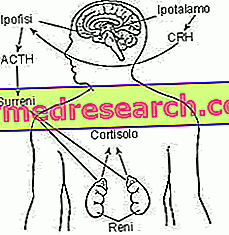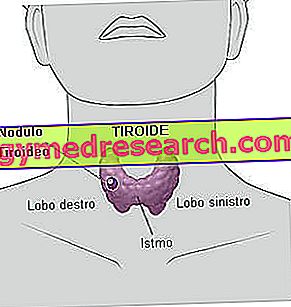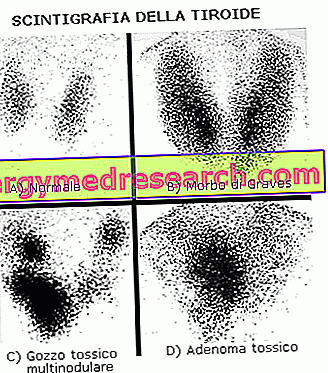Premise Thyroid symptoms is an improper way to define the symptoms and signs of the pathologies that affect the thyroid gland. The purpose of this article is to list, in a rather schematic way, the main clinical manifestations of the most common thyroid diseases (which, in a country like Italy, affect 20% of the general population)
Category endocrinology
While hyperthyroidism is a morbid condition due to the enhanced secretory activity of the thyroid, thyrotoxicosis is the clinical picture that is established in response to the exposure of the tissues to the thyroid hormones in excess. Exophthalmos (protruding eyes) may be a symptom of thyrotoxicosis associated with Graves' disease
Watch the video X Watch the video on youtube Definition Hyperthyroidism is a clinical syndrome caused by excessive production of thyroid hormones. The affected person very often develops significant alterations to the metabolism, nervous system and heart. Symptoms To learn more: Hyperthyroidism symptoms Hyper-ionicity causes an increase in oxygen consumption and metabolic heat production
Generality Subclinical hypothyroidism is a disorder of the thyroid gland characterized by an increase in serum levels of the thyroid-stimulating hormone (TSH) associated with thyroid hormone values (thyroxine and triiodothyronine) in the norm. In this condition, the typical symptoms of overt hypothyroidism are scarce or absent: the increase in TSH levels is able to maintain thyroid hormone values in the normal range. Th
Generality Hypothyroidism is the morbid state that reflects the inability of the thyroid to synthesize a quantity of hormones adapted to the needs of the entire organism. The causes of hypothyroidism are numerous and very varied in nature. Consequently, doctors have thought of subdividing them into 4 major categories, from which as many forms of hypothyroidism derive: primitive hypothyroidism, secondary hypothyroidism, tertiary hypothyroidism and iatrogenic hypothyroidism
Generality The dosage of urinary or plasma metanephrines represents a simple and reliable test for pheochromocytoma screening. Metanephrines derive from the metabolism of catecholamines, hormones produced and secreted by the adrenal medullary in order to prepare the body to deal with stressful events
Generality Addison's disease is a clinical condition caused by primitive adrenocortical hormone deficiency; also known as corticosteroids, these hormones are produced by two small endocrine glands allocated in the fat that overhangs the kidneys and therefore called adrenals. In their outermost portion, called cortical, these glands produce and secrete three types of hormones: androgens, glucocorticoids and mineralocorticoids
Generality Basedow's disease is the most common cause of hyperthyroidism worldwide, with an average incidence that - although subject to wide geographical variations - is between 1.5 and 3% of the population. Also known as Graves' disease or widespread toxic goiter (due to the uniform increase in thyroid volume, with no nodular formations), Basedow's disease especially prefers women, with a male / female ratio of 1: 5-10
What is dwarfism Dwarfism is a serious statural defect, for which - at the end of puberty - the height does not reach 130 cm in men and 125 cm in women. When the stature exceeds these values, but remains however below the meter and a half, one speaks of moderate statural hypo-evolutionism. However, given the great variability among the different ethnic groups, the reference structural values remain indicative. Th
Generality The thyroid nodules are anomalous protuberances of the thyroid gland, having a more often benign than malignant nature. Of extremely variable dimensions, the thyroid nodules can present themselves in different ways: they can be single or multiple protuberances; they can reside on the surface of the thyroid or in the deeper layers of the latter; may be symptomatic or asymptomatic; they can stimulate or depress the hormonal activity of the thyroid; etc
Scintigraphy Bone scintigraphy Thyroid scintigraphy Myocardial scintigraphy Thyroid scintigraphy is a diagnostic imaging technique, which provides valuable information not only on the morphology of this gland, but also and above all on its functionality. Like all scintigraphic techniques, it is based on the administration of radioactive drugs able to be distributed preferentially in the studied body district, in this case in the thyroid











